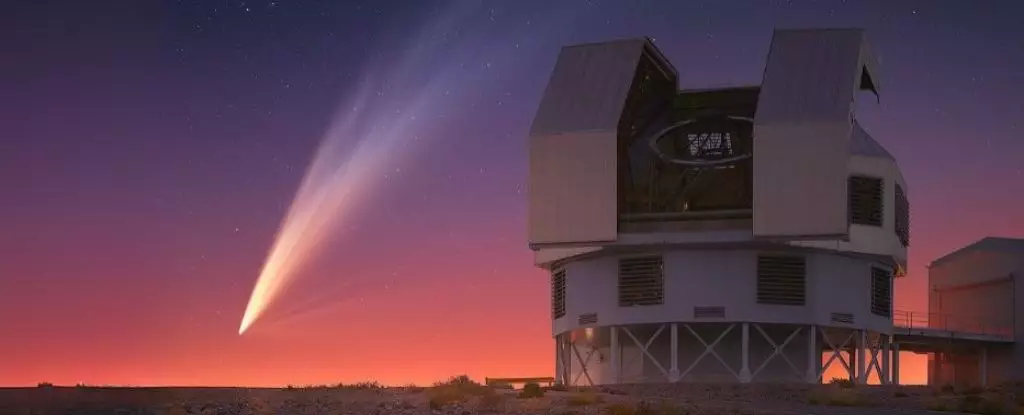Comets have fascinated humanity for centuries, often regarded as mysterious heralds from the outer reaches of our solar system. They are unpredictable actors in the cosmic drama, and their appearances ignite curiosity and excitement among astronomers and stargazers alike. One such noteworthy comet was Comet G3 ATLAS, which was discovered in April 2024 and captured the attention of the astronomical community. This article delves into the circumstances surrounding Comet G3 ATLAS, its behaviors, and the enthusiasm it generated.
The Discovery and Initial Hype
Comet G3 ATLAS was unveiled to the world on the night of April 25, 2024, by the Asteroid Terrestrial-impact Last Alert System (ATLAS) survey, which specializes in identifying near-Earth objects. The early observations indicated that this comet had the potential to become bright, particularly as it approached its perihelion in January 2025. Such initial excitement is common in the realm of comets. The unpredictability of these celestial objects, however, is a double-edged sword. While some comets exceed all expectations—like the stunning Comet McNaught in 2007—others, such as Comet ISON in 2013, may falter dramatically, leaving eager enthusiasts disappointed.
Comet G3 ATLAS was set on a trajectory that would bring it perilously close to the Sun—approximately 14 million kilometers—from perihelion occurring on January 13. As the comet approached, the anticipation grew. Would it replicate past successes or meet a fate similar to ISON? Observers watched closely, especially as satellite instruments like SOHO’s LASCO C3 imager captured the comet bustling with brightness, reaching a magnitude of -3.8. This brightness marked it as one of the most luminous comets seen since McNaught, amplifying the expectations of astronomers and the public alike.
Yet, history teaches us that the journey toward perihelion can be fraught with danger. The intense gravitational pull from the Sun and the associated heating can compromise the integrity of a comet’s nucleus, leading to fragmentation and decay. Many comet seekers have stories of close calls and disappointing ends, highlighting the inherent risks of cosmic exploration.
The Ecliptic Encounter and Southern Hemisphere Focus
As G3 ATLAS reached its brighter phase, it became evident that celestial path of this comet favored the Southern Hemisphere. Though it briefly appeared in northern skies, this window was short-lived, from January 8 to January 15, 2025. Such planetary misalignments often frustrate astronomers, especially those in the northern latitudes. However, for observers in regions like Australia, enthusiasm reigned supreme. They found themselves treated to a spectacular view as the comet unfurled its dust tail, displaying the kind of beauty that ignites passion in the field of astrophotography.
The phenomenon of comet tails is remarkable. Contrary to popular belief, the tail of a comet is not a mere extension of the nucleus but rather a result of solar wind and radiation pressure acting on gases and dust particles. For G3 ATLAS, the tail exhibited the striking appearance of ‘syndynes’—dust streaks trailing behind as the comet hurtled onward.
The Fading Glory of G3 ATLAS
However, the excitement soon turned to concern as images captured shortly after perihelion revealed a troubling development. The comet appeared to be suffering; its nucleus was fading, leading some to dub it a “headless comet.” This rare occurrence offered a sobering reminder of the uncertainties surrounding cometary behavior. A comet can appear spectacular at one moment and falter at the next. As G3 ATLAS continued on its journey, the tail remained visually striking, characterized by an unusual striped pattern, a noteworthy final act for those who could observe it.
Although currently shining at +5th magnitude in the constellation Piscis Austrinus, G3 ATLAS’s ability to regain its former brightness seems doubtful. Regardless, its orbit—an impressive 160,000 years inbound—suggests that even if its nucleus deteriorated, fragments of the comet may eventually return to the inner solar system after an extensive journey.
Comet hunting remains an alluring pursuit among astronomers. Each discovery opens doors to understanding the solar system’s history and origins. G3 ATLAS illustrates how these events captivate the public and scientists alike, rekindling a shared fascination with the universe. As we eagerly await the next bright comet, we continue to marvel at the beauty and unpredictability of these celestial travelers—reminding us of the dynamic cosmos that surrounds us.

Leave a Reply